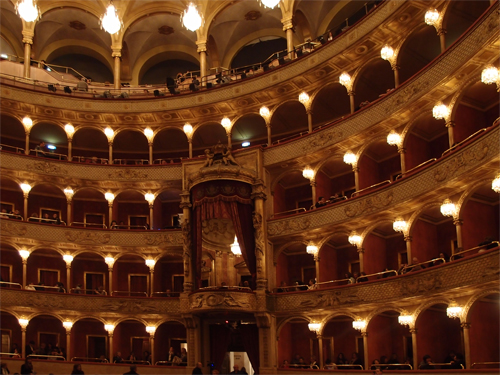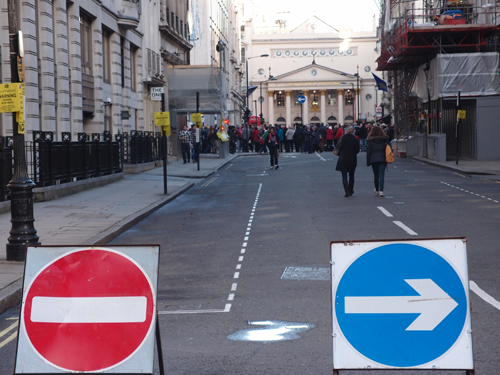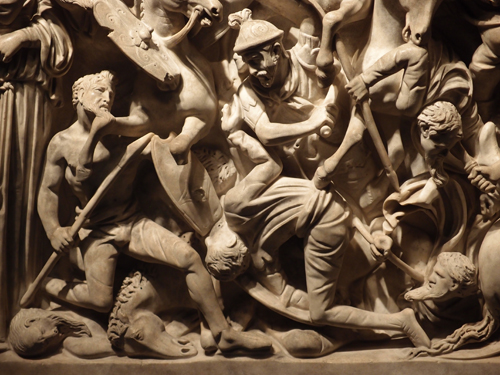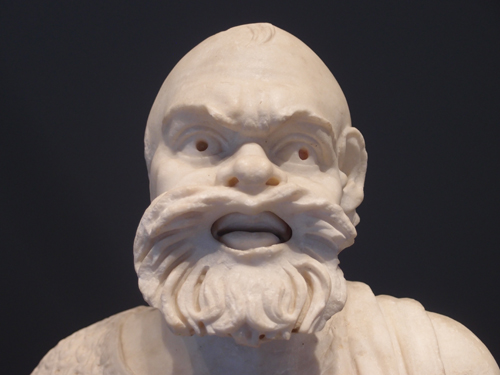Friday in Venice
We are beginning with the development of the transmedial storytelling project FRIDAY IN VENICE.
We, this is the initiator Michael Schindhelm;
master students of the Zurich University of the Arts Michaela Buesse and Michael Faessler (see also their articles in this magazine);
architect and journalist Niloufar Tajeri;
urban designer and journalist Aline Loew;
theatre and film director Robert Schuster,
and many other contributors.
FRIDAY IN VENICE will be supported by
Alfred Herrhausen Society, Germany;
Zurich University of the Arts, Switzerland;
Center for Media and Interactivity at Giessen University, Germany;
La Biennale di Venezia, Italy;
OMA, Rotterdam, The Netherlands

WHAT IS IT ABOUT?
This project is an online/offline game spinning around the seemingly simple question: Which change is possible in Europe today?
The sceptic presumes: Nothing is possible. Some say: Everything is possible. Others say: Nothing is impossible.
The notions of what future is to be desired are divergent and chaotic. Europe should become more equalitarian, liberal, safe, optimistic, ecology-minded… An individual notion lays claim to the possible; the sum of all notions calls for the impossible. This project is an attempt to find tangible, provisional and presumably divergent answers to the question about the lay of the continent, its nations and inhabitants. It will result in a collective speculation on the near future of some of the most debated subjects of European politics.Upon its publication in May this year FRIDAY IN VENICE will initiate a game but certainly not a zero sum game.
FRIDAY IN VENICE will unfold in May 2014 as an interactive website www.lavapolis.com (see entry on this website) and in August this year emerge as political theatre show at the Venice Biennale 2014 within the section of MONDITALIA.
In FRIDAY IN VENICE, a fictional visitor to Europe named Friday meets with the real users of our interactive web platform www.lavapolis.com and visitors to the 2014 Architecture Biennale in Venice.
Friday hails from an imaginary island society described in a framework story (LAVAPOLIS, Sternberg Press, Berlin/New York, by Michael Schindhelm).
Friday’s political and social observations on the state of affairs in Europe during the 2014 parliamentary elections and the Italian EU presidency, which he publicizes in the form of video presentations on the platform for his audience, become part of an assessment and participation game centering around the possibility of desirable social change on the continent. A juxtaposition of political reality and a heterotopia creates a collective discourse emerging at one of Europe’s most relevant public domain – La Biennale die Venezia 2014 – via the interactive show FRIDAY IN VENICE. The show will be part of the program MONDITALIA (see below).
FRIDAY IN VENICE will be released in several formats, such as:
• LAVAPOLIS book publications (German/English)
• internet platform (German/English)
• performance at the 2014 Venice Biennale

The story of LAVAPOLIS:
This is one year in the near future. Global society is caught up with the familiar calamities like economic misery, social unrest, overpopulation or environmental destruction. The island is not immune to these issues, but it has created social, economic and cultural models, which have a (utopian) heterotopic nature.
Individuals talk about their lives or their temporary stay on an island which is about as large as Malta, is located between the Greek, Italian and North African coasts, far away from any other place. They either live on the island (some of them since it was settled after 1945) or are spending some time there as visitors or illegal refugees (having been detained by the authorities). Most of them come from different countries and diverse social classes and represent differing world views and faiths.

Background: An inferno caused by a volcanic eruption five hundred years ago left its mark on the island and there were no traces of human life there at all. The volcano became extinct in 1945.
In the turmoil caused by the civil war in Greece, a man succeeded in asserting his legal claim to the island. He was appointed the patron with American help (the Truman Doctrine). The new principality developed into the Las Vegas of the Mediterranean during the next few years, while corruption, military dictatorships and fanaticism prevented the establishment of stable, modern societies in neighbouring countries.
Following the death of the first patron, his son renounced his father’s casino and offshore capitalism. The former pupil of Michel Foucault made use of a spatial theory idea taken from the philosopher (Des Espaces Autres), which suggests that there are counter-places to the real world which “represent, challenge and move these places in the completely opposite direction”. Foucault called these kinds of places heterotopias (other places or counter-places).
The new patron was inspired by the idea of turning his island into a political and social heterotopia. The new society of LAVAPOLIS made use of the latest findings from social research, town planning, migration policy and business finance to establish a social system which still represents the real world and its increasingly serious problems, but also reverses developments.

REM KOOLHAAS’ MONDITALIA PROJECT AT THE 2014 VENICE BIENNALE
“In a moment of crucial political transformation, we decided to look at Italy, in many ways a fundamental country for our own research and interests. The coexistence of immense treasures, creativity and competences with permanent escalating crises, has been the source of both personal admiration and intense amazement, while its architectural achievements – from the Romans to the Renaissance and further to the modern golden age of the 1960s and 70s – have always been an inspiration in our own work.
Because the length of the Arsenale’s Corderie typically creates a sequence of individual episodes that do not form a single narrative, we propose to dedicate the entire building to a single theme – Italy – and to represent all aspects of Europe’s most crucial country in a form that ranges from architecture, theatre, and documentary, to films, re-enactments, exhibitions, lectures, debates, shows, …
We will collect a selection of Italian architecture – each project in our view representative of the country. The narration of each project would be left to invited contributors – both Italian and foreigners – who will collectively generate an ‘exhibition of exhibitions’… The Corderie would be treated as a continuous multidisciplinary performance space that represents Italy itself. In a unique collaboration with the Dance, Music, Theatre and Film Departments of La Biennale di Venezia, we hope to initiate a theatrical process that invites artists to respond, on their own terms, to the theme of Italy. We will offer a framework, a stage, schedule, and set; dramaturgy would then be the responsibility of the participant…
![renzi1_MGzoom[1]#5](https://michaelschindhelm.com/wp-content/uploads/2014/03/renzi1_MGzoom15.jpeg)
Throughout the Corderie, the exhibitions, a series of theatrical productions and events will unfold, engaging architecture, politics, economics, religion, technology, industry… Each one could leave a physical trace in the form of sets, objects, written material, projections, or the extended presence of people. The Corderie would be imagined as a multidisciplinary work in progress, constantly evolving and on permanent display, with varying degrees of activity and varying scales of productions taking place in its different sections.”
